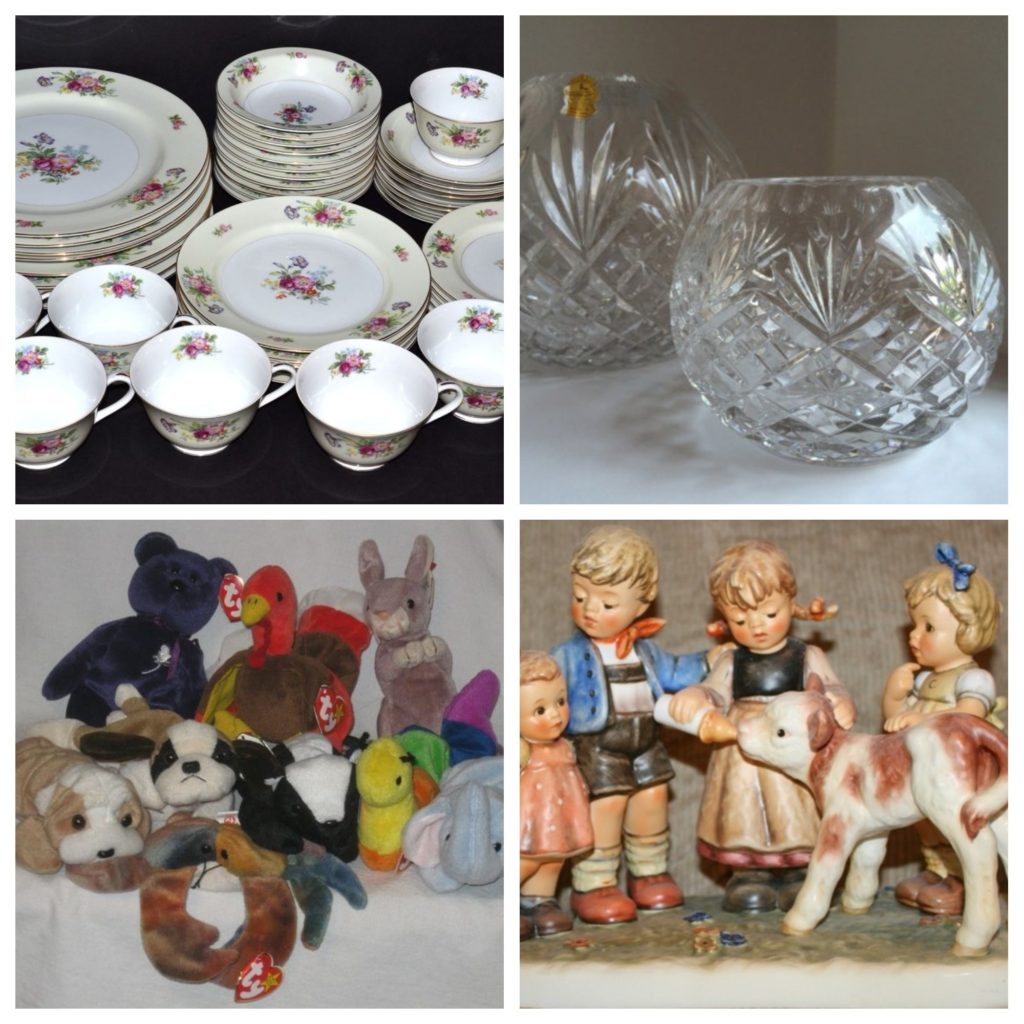
What is considered to be a valuable collectible today; doesn’t necessarily mean it’ll be collectible and desirable tomorrow.
Just as it is in the fashion and home decor industry, the collecting arena is no different: Collecting trends are constantly changing.
What Warrants the Value of a Collectible?
Collectibles are, by definition, items which are soon to be-or already are-no longer produced and are influenced by fads and publicity. Sellers usually get to establish the going “market price” for collectibles, and no one has the right to question their authority to do so.
Why we collect- continues to be a mystery.
The individual desires to obtain the item (the thrill of the hunt) and the price they paid for it; will help build a guide in the future to its true current values. Logically speaking, the more desirable a collectible is, the higher dollar value will be paid by a collector to own it. This increases the worth of the object. In other words: The lack of potential buyers, will warrant the decline of an objects collectibility and value.
As the CEO of an estate sales company, I’m pretty much, up-to-date on current collector buying trends. We have clients who buy-antique pottery wares, military-related items; vintage or fine jewelry; antique furnishings and toys; art, and vintage apparel. Adversely, we see particular items- which once were highly sought-after- often left unsold at the end of the sales.
Here’s a partial list of previous highly collectible items:
1-Grandmother or mom’s favorite china
Since I adore elegant china and porcelain, this fact is a hard pill to swallow. But please keep in mind; even though most elegant china and dinnerware aren’t considered a hot commodity to collectors today, doesn’t mean they are worthless to their owners. Beauty is in the eye’s of the beholder, so those lovely porcelain dinnerware sets may be valuable to you for sentimental reasons, but unfortunately, they probably won’t be considered priceless to someone else when sold for profit. There are always exceptions. If you’re looking to buy vintage china sets for profit, watch for the companies of Noritake, Limoges, Lenox, Wedgwood, Royal Doulton; Royal Albert, Rosenthal, Spode, and any china which is gold encrusted. Additionally, hard-to-find bone china and porcelain serving pieces command higher prices.

2-Antique or Vintage, Pressed Pattern Glass Tableware and Novelty Table Decor
Early American Pattern Glass (i.e. EAPG) was made during the latter part of the 19th century and early 20th century. It is estimated that over 3000 different patterns were made. Albeit, some formed pieces were made in limited numbers and are worth more than the common patterns that were produced. EAPG was manufactured in elegant, clear crystal glass and in a limited amount of colors. Unfortunately, many reproductions of the early patterns abound on the market today, which have ultimately brought original EAPG values down.

3-Beanie Babies (Beanie mania!).
During the early 1970s, Ty Warner worked for Dakin-a world leader in plush toys. He left the company in the ’80s, then in 1993 came out with his own line of plush toys which included the first Beanie baby, “Legs the Frog.” His plush toys were different because he used beans to fill their inside, this made them poseable as well as cuddly toys. Mr. Warner was a savvy businessman who knew supply and demand would ultimately drive merchandise prices up, so he would periodically retire chosen Beanie babies, as well as only sell them via smaller boutique-like toy stores. This technique proved successful during the ’90s and it made Ty Warner a very rich man, but by 1999 the first signs of the Beanie Baby frenzy were becoming apparent. With Ty Warner releasing and retiring more Beanie Babies, the supply began overtaking the demand for them. Store shelves were loaded with Beanie Babies, and sales were plummeting. Into the 21st century, sales declined by more than 90% and warehouses were full of Beanie Babies…thus their decline in values.
There are exceptions: Earlier-first generation Beanie Babies with flatter faces; particular retired series; those with manufactured flaws, such as the 1993/1994-“Valentino the Bear” Ty, which may have some misspelled words found in the “swing tag.” These flawed Beanie Babies, along with those featuring unique oddities- are still quite valuable selling in the thousands of dollars.
Buyer beware!If you’re considering collecting Beanie Babies-counterfeits are everywhere! Make sure to do your homework before spending insane amounts of money on a fake Beanie Baby.

4-Hummel, or Goebel Plates and Figurine Groupings
The younger generation today aren’t usually interested in collecting porcelain figurines, or collector series, decorative wall plates. These once, highly-collectible hand-painted plate depictions have seen their values plummet in recent years. The baby boomer generation or older, still collect Hummels and Goebel figurines, with larger and older pieces pre-1949 being the most collected pieces. Precious Moments, Boyd’s Bears, and Franklin Mint pieces are victims of this apathy as well. When I’m called to conduct a sale and I see collector plates on all the walls, it’s unfortunate I have to inform my clients that they may, or may not sell, but for far less then what they originally cost.


There are so several other items considered by many to be collectible today, but because of buyer trends changing, their values are only based on personal admiration preferences-not how much money they are worth.
Quote of the day:

Leave a Reply